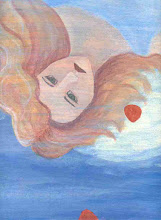My son is not quite five. He is not in elementary school. He is not even in Kindergarten. He loves this book about "the green alien with big ears". Go figure. Actually, that may not be too surprising since I bought this book in 2001, long before my not-quite-five-year-old son was born. He must have inherited my sense of humor.
This book is a challenge to read out loud because some words are in a different language, some are transpositions, and some are Spoonerism. That challenge actually adds to the appeal of the book for me. My son is learning to read and struggles with words in English. The story is funny, silly and absolute nonsense, as you would expect from the "Baloney" in the title.
Lane Smith does a marvelous job with the illustrations, from "the green alien with big ears", to the zimulis, to the razzo, to the Planet Astrosus, to the sighing flosser... The book is cover to cover wonderful.















